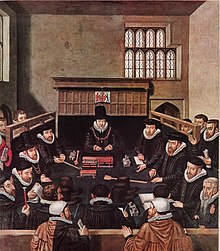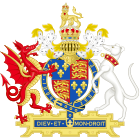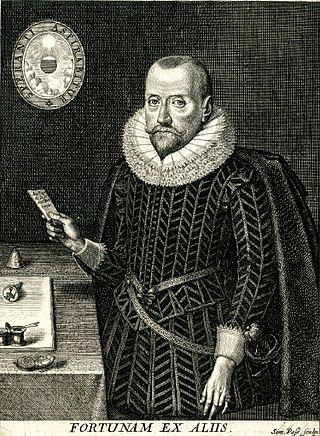
Sir Robert Naunton was an English writer and politician who sat in the House of Commons at various times between 1606 and 1626.
Barnabe Googe, also spelt Barnabe Goche and Barnaby Goodge, was a poet and translator, one of the earliest English pastoral poets.

In medieval and early modern Europe, a tenant-in-chief was a person who held his lands under various forms of feudal land tenure directly from the king or territorial prince to whom he did homage, as opposed to holding them from another nobleman or senior member of the clergy. The tenure was one which denoted great honour, but also carried heavy responsibilities. The tenants-in-chief were originally responsible for providing knights and soldiers for the king's feudal army.

The Tenures Abolition Act 1660, sometimes known as the Statute of Tenures, was an Act of the Parliament of England which changed the nature of several types of feudal land tenure in England. The long title of the Act was An Act takeing away the Court of Wards and Liveries, and Tenures in Capite, and by Knights-service, and Purveyance, and for settling a Revenue upon his Majesty in Lieu thereof.
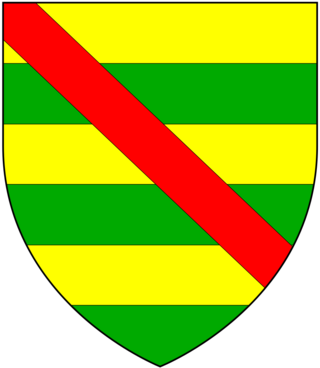
Michael de Poynings, 1st Baron Poynings, Knt., of Bures St. Mary, Suffolk, was an English nobleman and soldier. He was present at the Battle of Crécy.
Groom of the Chamber was a position in the Household of the monarch in early modern England. Other Ancien Régime royal establishments in Europe had comparable officers, often with similar titles. In France, the Duchy of Burgundy, and in England while French was still the language of the court, the title was varlet or valet de chambre. In German, Danish and Russian the term was "Kammerjunker" and in Swedish the similar "Kammarjunkare".

Elizabeth de Vere, Countess of Oxford was an English noblewoman. As a young child she became a royal ward.
Sir William Whorwood was a landowner in Staffordshire and the neighbouring counties, a distinguished lawyer, and a politician in the reign of Henry VIII. He achieved the positions of Solicitor General and Attorney General.

Sir Walter Cope of Cope Castle in the parish of Kensington, Middlesex, England, was Master of the Court of Wards, Chamberlain of the Exchequer, public Registrar-General of Commerce and a Member of Parliament for Westminster.
Sir Thomas Wroth was an English courtier, landowner and politician, a supporter of the Protestant Reformation and a prominent figure among the Marian exiles.

Sir William Mohun of Hall in the parish of Lanteglos-by-Fowey and of Boconnoc, both in Cornwall, was a Member of Parliament.
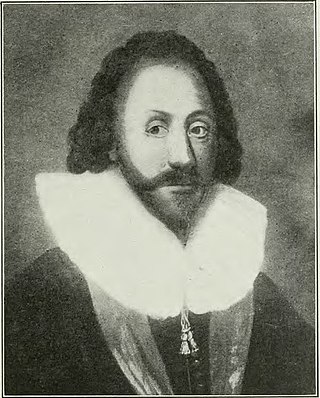
Sir Thomas Wise, KB, of Sydenham in the parish of Marystow and of Mount Wise in the parish of Stoke Damerel in Devon, was Sheriff of Devon in 1612 and in 1621 served as a member of parliament for Bere Alston in Devon.

Sir Edmund Knyvet was the eldest son of Sir Thomas Knyvet, a distinguished courtier and sea captain, and Muriel Howard, the daughter of Thomas Howard, 2nd Duke of Norfolk.
An Inquisition post mortem is an English medieval or early modern record of the death, estate and heir of one of the king's tenants-in-chief, made for royal fiscal purposes. The process of making such inquisition was effected by the royal escheators in each county where the deceased held land. The earliest inq.p.m. was made in 1236, in the reign of King Henry III (1216–1272), and the practice ceased c. 1640, at the start of the English Civil War, and was finally abolished by the Tenures Abolition Act 1660, which ended the feudal system.

Sir Richard Pollard, was Member of Parliament for Taunton in 1536, and for Devon in 1540 and 1542. He played a major role in assisting Thomas Cromwell in administering the Dissolution of the monasteries.

Sydenham House in the parish of Marystow in Devon, England, is a seventeenth-century manor house. The Grade I listed building is situated about thirteen miles south-west of Okehampton, on a 1,200 acres (490 ha) estate. It was built by Sir Thomas Wise (d.1629) between 1600 and 1612, incorporating an older structure. It was partially destroyed by fire in 2012. The gardens are Grade II listed in the National Register of Historic Parks and Gardens.
The Manor of Combe Martin was a medieval manor estate in Combe Martin, Devon, England.

Robert de Lisle, 1st Baron Lisle was an English peer. He saw military service in Scotland, and fought at the Battle of Boroughbridge. After his wife's death, he joined the Franciscan order. He was the owner of the Lisle Psalter.

The House of de Vere was an old and powerful English aristocratic family who derived their name from Ver, in Lower Normandy, France.
